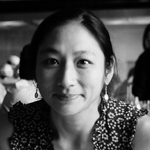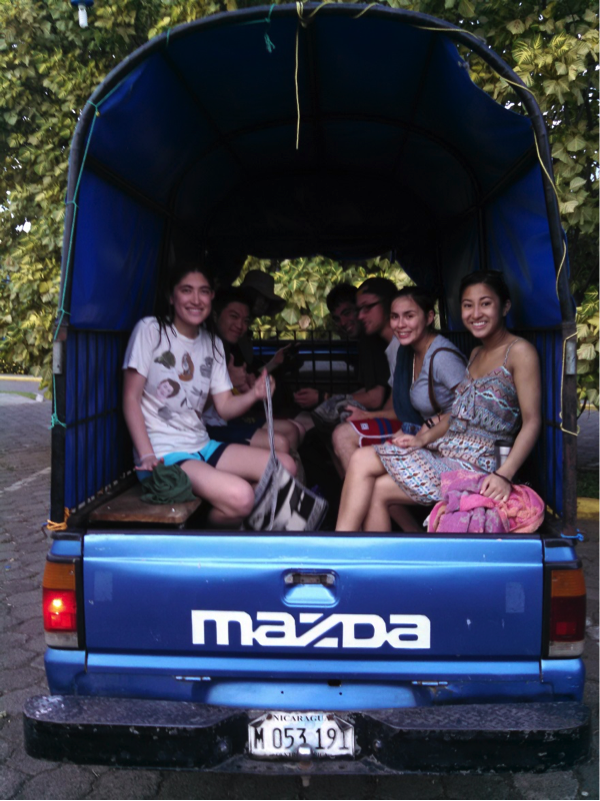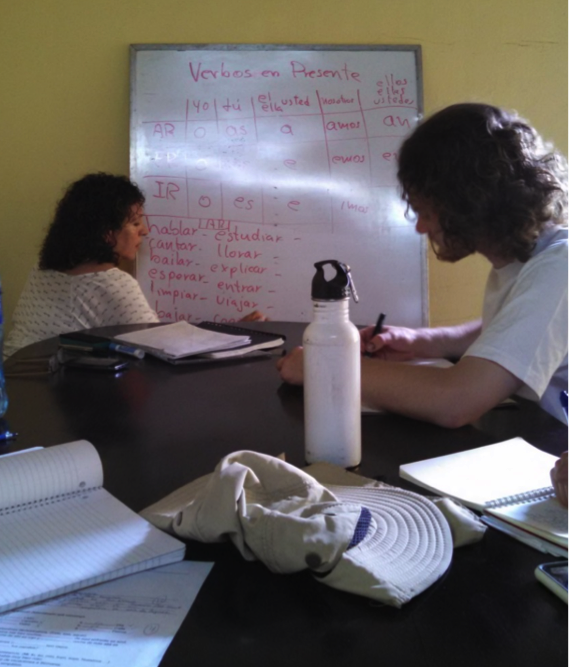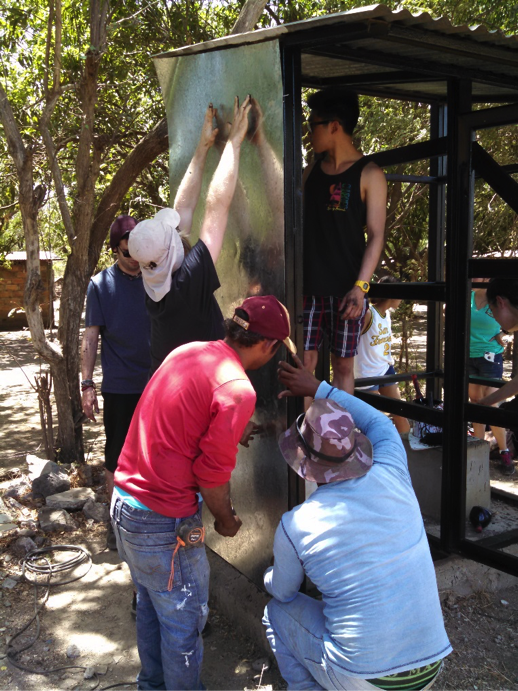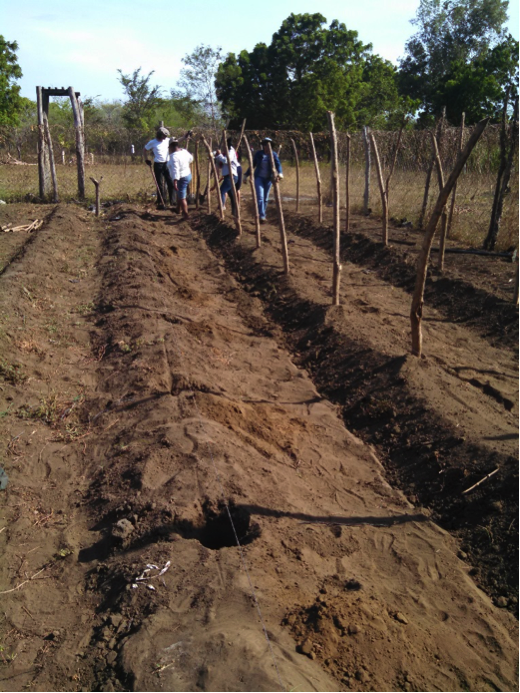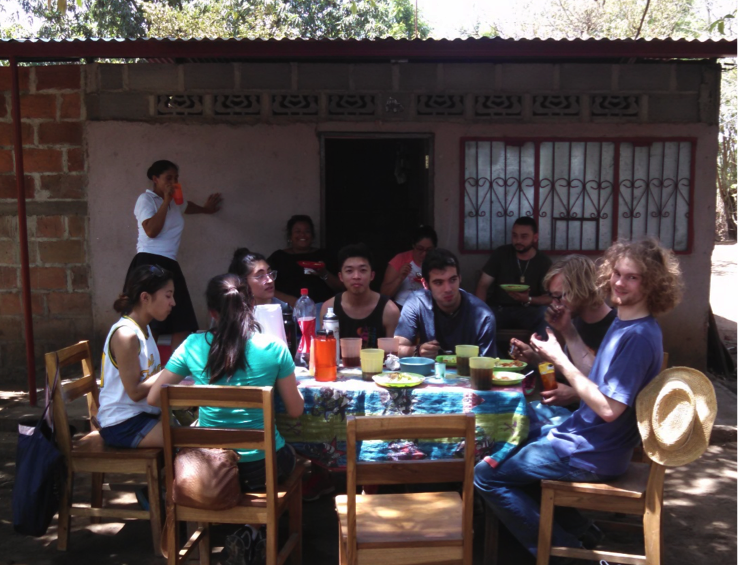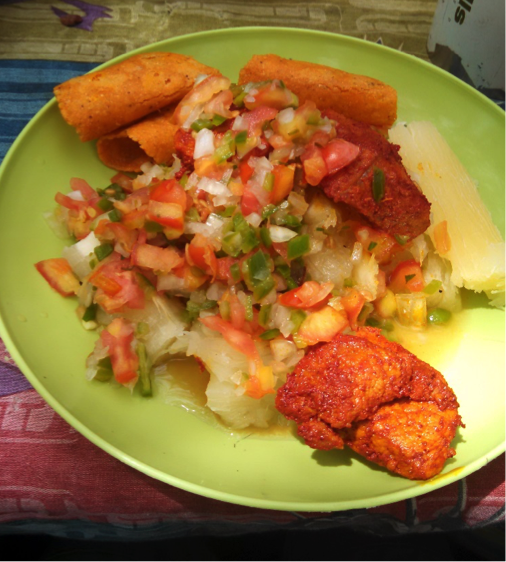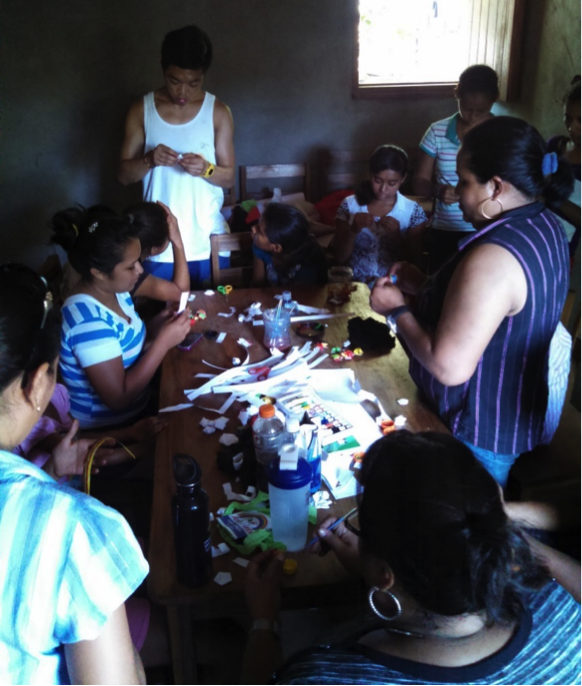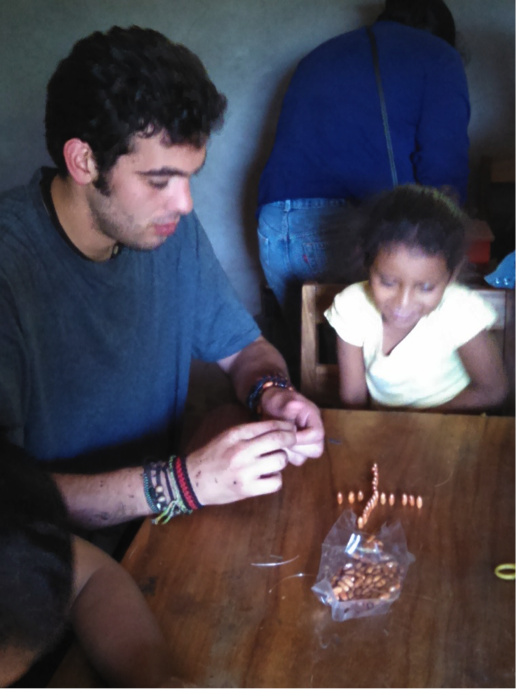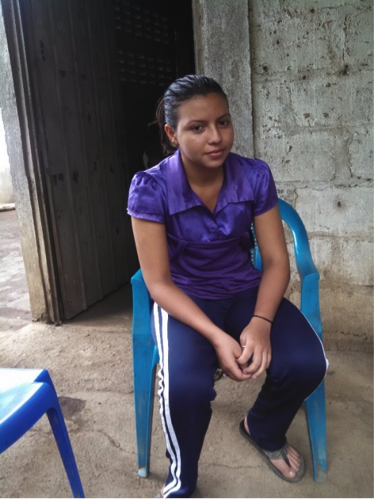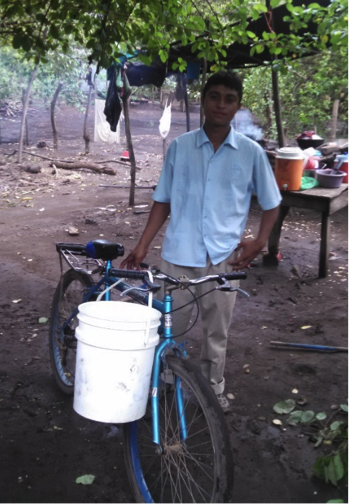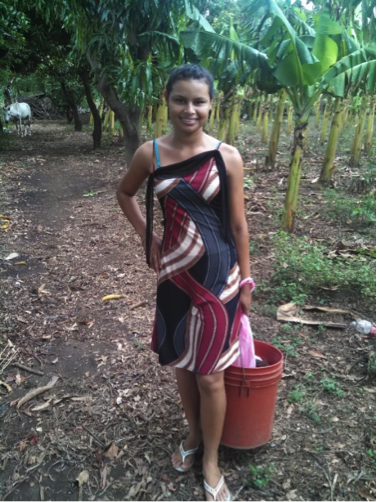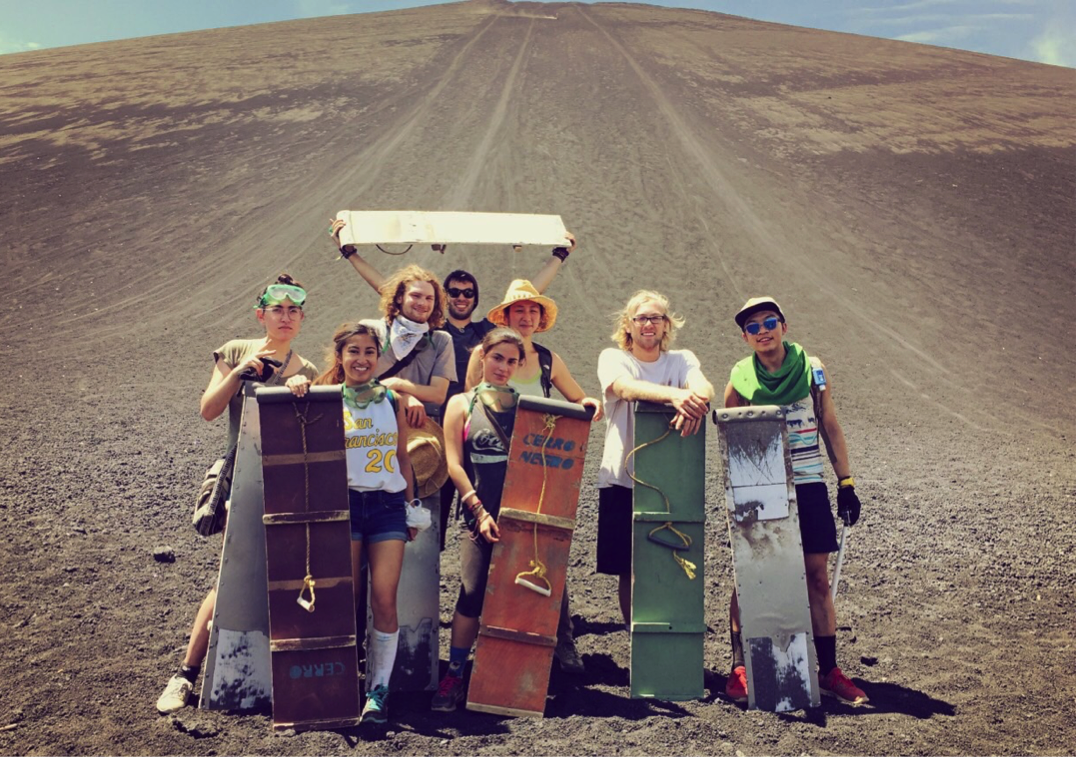Summer 2015 Immersion in Nicaragua
For two weeks immediately following the Spring 2015 semester, I led an immersion course to Nicaragua with 7 University of San Francisco students. We stayed with homestay families in the city of León, near the Pacific coast, and traveled daily to the village community of Goyena. The course, ARCD 348: Nicaragua Outreach Summer Immersion, was interdisciplinary, consisting of students from Architecture & Community Design, Environmental Studies, Nursing, Physics and Psychology.
We were hosted by a local Non-Governmental Organization called ViviendasLeón, with whom the Architecture & Community Design program has had many years of fruitful collaboration both during the regular semesters and during summer immersions.
Nicaragua is the second poorest country in the Western Hemisphere after Haiti, and is located in the very center of Central America. For being a relatively small, poor country, Nicaragua has had an enormous presence in world politics especially in the latter half of the 20th century due to a revolution and subsequent power struggles. For the last couple of decades there have been a great number of Non-Profit and Non-Governmental Organizations who have visited and provided aid to impoverished and displaced people, with varying degrees of success.
ViviendasLeón differs from other NGOs due to its focus on human capacity development. Many organizations, including the Nicaraguan government, have come through villages such as Goyena with direct donations of building materials, clothing and shoes, and water well construction, but have not provided people with any methods of empowerment. ViviendasLeón works toward fulfilling this very important need with community-building programs such as skills training and small business seeding.
On a typical day during our immersion, after a hearty breakfast with our homestay families, we met first at the ViviendasLeón office for a Spanish lesson and debriefing on the goals for that day.
Then, we would hop into our air-conditioned van (the only air-conditioned place we would experience!) for the 20-minute ride out to Goyena, the rural community where we would be working. It was very warm (95-98 °F) and humid so it was not easy to contribute a lot of manual labor for many hours at a time. Still, we managed to make ourselves useful as best we could, drinking enormous amounts of water and taking breaks in the shade. The climate was only one of the constant reminders of our status as fish-out-of-water visitors.
Prior to our arrival, ViviendasLeón had scheduled a number of small projects that they knew we could help with right away. On the first day we set to work at both – rebuilding a toilet facility at the elementary school, and preparing gardens with post-and-string structures for planting. These gardens are part of a successful vegetable cooperative program which has engaged many women in the community to learn farming and business skills in order to sell their vegetables at local markets and earn some income for their families. Most men find employment in neighboring sugar cane fields, some local construction, and even abroad in Costa Rica, Mexico, or the United States. Some of the women who are left behind have become highly engaged in small businesses such as a honey bee-keeping cooperative and sewing, empowering them to not only make changes in their personal economics but also in their family structures.
In both of these initial projects, USF students worked directly alongside local community members, receiving instruction and learning resourceful tips about how to accomplish these jobs, as well as entertaining each other with limited Spanish or English skills.
A typical morning was concluded by an invitation to lunch – hand-cooked over a wood stove by a local family. Delicious!
After lunch came another set of activities, which saw the group occasionally splitting up into smaller teams. We were asked to assist with the afternoon arts & crafts enrichment program for children, which took place at the community center in the middle of the village, a building designed with the community and partially built by USF students! Working with the children was very rewarding as communication (often via humor) was quite easy and immediately satisfying.
After two afternoons with the children, and some conversations with the art instructor, we decided to write up more lesson plans for activities that would use simple and inexpensive materials. Tapping into our collective experiences of art, craft and science activities as children, we brainstormed and then wrote up step-by-step illustrated instructions for the teacher. One element we were careful to incorporate was embedding a lesson of care into the activity. For example, the creation of small paper star ornaments required careful folding of thin strips of paper and getting the angles even enough into a five-sided shape to become a well-proportioned star in the end.
One of the main motivations for the “lesson of care” emphasis was the fact that these children were all from a small neighborhood within Goyena, called Nueva Vida. This area is unique in that the resident families have been displaced from their original lands a great deal, and now live in close proximity because they no longer own any land that could be cultivated with crops or husbandry. More than other surrounding communities, the people of Nueva Vida have been victims of non-sustainable charity efforts by a variety of organizations prior to the arrival of ViviendasLeón. Over time the community has learned to depend on these direct donations and have stayed in very poor conditions without learning how to improve their situation or gain employable skills. They have also become known as the community least likely to attend capacity training or informational workshops, and seemed to be the most fractured. Their main “oppressor” is a huge sugar cane company called Ingenio San Antonio, which own all of the land surrounding Goyena. They fumigate by airplane right over their fields which are directly next to the village, and every time they do, residents are sickened to the point of throwing up. They also know that their well water is being contaminated by the chemicals but they have no choice but to pump it daily and drink it. It may be too difficult or even impossible to directly influence the sugar cane company, but one thing we can slowly do with daily results is to help the people of Goyena develop a stronger sense of community so they can feel more empowered and eventually become more organized.
So, after our first half-week of observations and discussions with ViviendasLeón leaders, we decided to work on two things – developing a culture of care, and helping young people to attain habits of community engagement early (which are linked, and both lead to empowerment which, at its best, will allow them to stand up against their oppressors). To this end we created two things – one was the set of care-oriented lesson plans for the kids’ art/craft activities. The other was an environmental health survey, which was carefully worded to link their environmental health concerns with a need to engage with their fellow community members. We talked to about 40 young people between ages 15 and 25, and almost all of them identified the fumigation and chemicals used by the sugar cane company as bad for their health, and almost all of them also identified that they themselves would like to participate more in community activities such as cleaning public areas and learning about environmental hazards. The next step is to design and implement these programs, as well as to secure more investment from the 3 or 4 people we talked to who were clearly energized and had strong leadership qualities. It was very exciting work, highly rewarding to talk to these individuals at length!
The trip was certainly not without its share of pure fun, as well. In our weekend between the two work weeks, we managed to fit in several significant outings including a day trip to the beautiful colonial town of Granada on the shores of Lake Nicaragua, a highly energized baseball game between the top rival teams of León and Managua, and a hot dusty hike up the side of Cerro Negro Volcano, rewarded by an even dustier descent by “volcano boarding”.
By all accounts, the trip was highly memorable and even life-changing for our students. According to their final reflection essays, their greatest concern was whether they had done enough, had they made any difference in the lives of the people we visited. As some time passes and the lessons of this immersion trip sink in, I trust they will realize that the greater point of this experience was its effect on their future endeavors – everything they tackle from now on will benefit from their having a little more perspective to contribute.
Live. Learn. Serve.

